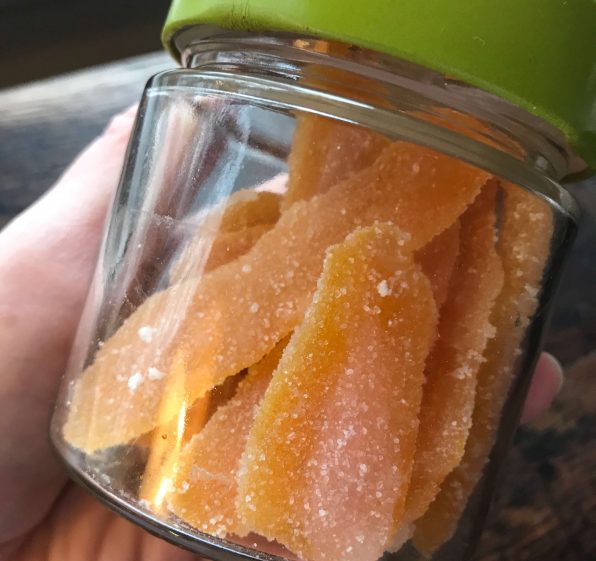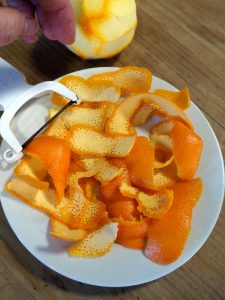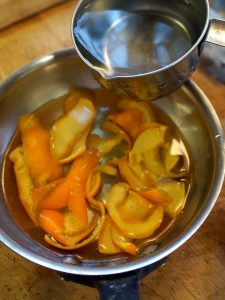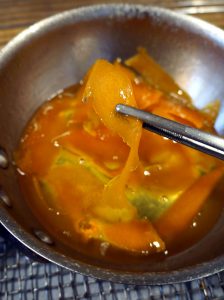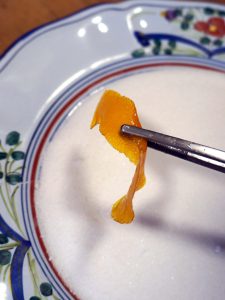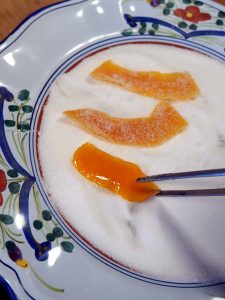When citrus is plentiful, save the zest. It’s the bonus flavoring so many of us just toss. You can dry it to add to soups and stews. Or dry it then grind the flavorful pieces into salt or sugar. At this time of the year though, I like to make candied citrus zest from oranges. (Or lemons or grapefruit.) It’s a sweet treat on its own and the secret ingredient in butter cookies, biscotti and my favorite ice cream. (Soufflé glacé praliné noisette. Union League Cafe in New Haven makes a wonderful version.)
There’s not much to making this confection. You want organic fruit. And you’ll need to wash it well in warm water. I use a vegetable peeler to remove the orange zest with as little bitter pith as possible. (Although one can make candied rind from citrus peels, that requires more gentle cooking to soften the peel.)
Cooking the zest is a two-step process. First you blanch the pieces of zest in boiling water to help reduce bitterness and soften. Here are the pieces of zests in the pot before blanching.
Then you simmer the pieces in a sugar syrup. As the slices of zest soften, they become translucent. The syrup reduces and thickens into a honey-like substance. When simmering the pieces of zest, watch the level of liquid because, when it evaporates, it can burn. Check the pot midway through and add more water if needed to keep the liquid flowing.
When the zest is translucent and pliable, you dredge each piece in granulated sugar. You can see how translucent each piece of cooked zest is.
Once it dries, the zest can be stored for a few weeks or longer in an airtight container.
Kitchen Notebook
Save the sugar used for dredging to use in cookie batter. Chocolate chip, butter cookies, anything basic. The cooking syrup can be used as a liquid sweetener. I used it to sweeten a batch of custard. Or, if you cook it a little longer, the syrup caramezes. Toss in a handful of sliced almonds, pour it onto a silicone mat and you have a micro batch of nut brittle.
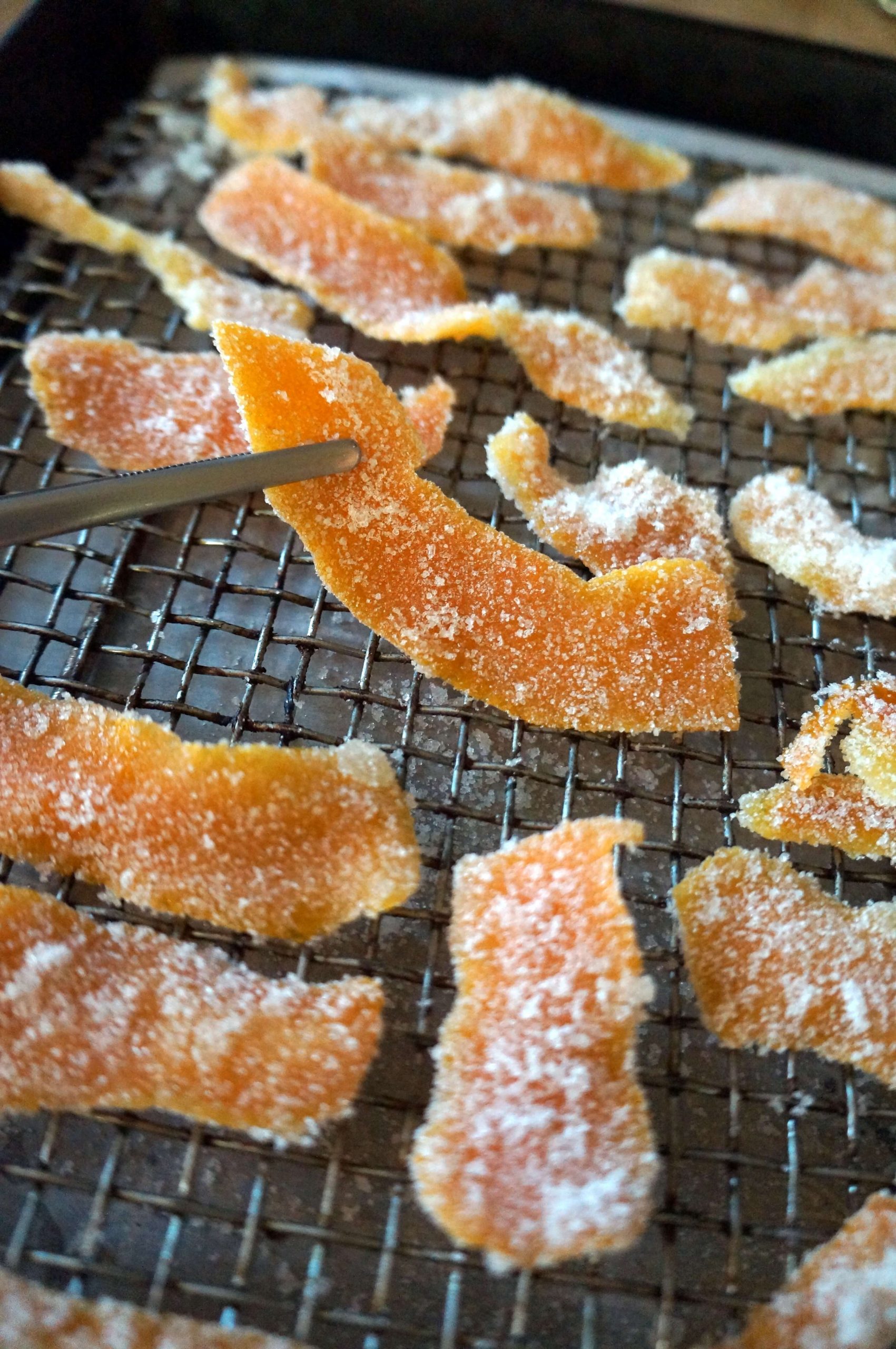
Ingredients
2 large organic oranges, unblemished peel
½ cup granulated sugar
Additional fine granulated sugar for dredging
Directions
- Line a quarter sheet pan with parchment paper or a silicone baking mat. Place a cooling rack on top.
- Wash the oranges under warm running water. Dry them. Remove the orange zest in long pieces using a vegetable peeler. Save the oranges for juice or to section and serve in salads.
- Place the pieces of orange zest in a small saucepan along with 2 cups of water. Bring the water to a boil reduce the heat to simmer and cook the zest for 2 – 3 minutes.
- Drain the zest and discard the water. Return the zest to the pot. Add ½ cup of the sugar and 1 cup of water. Place over high heat. Stir with a wooden spoon. Bring the water to a boil. Reduce the heat and simmer very gently until the pieces of zest are soft and translucent, for approximately 25 – 30 minutes. Watch the pot. After about 8 – 10 minutes, if the water has evaporated, add another ½ cup of water. When the pieces of zest are pliable, the liquid will be syrupy.
- Pour a generous amount of fine granulated sugar onto a flat plate. One piece at a time, remove the pieces of zest from the liquid using kitchen tweezers or tongs. Position each piece of zest on top of the sugar. Turn it over to coat it evenly with sugar. Repeat with the remaining pieces of zest.
- Allow the piece of zest to cool completely on the rack for at least an hour. Then pack the slices between slices of parchment or wax paper in a container with a tight-fitting lid.

